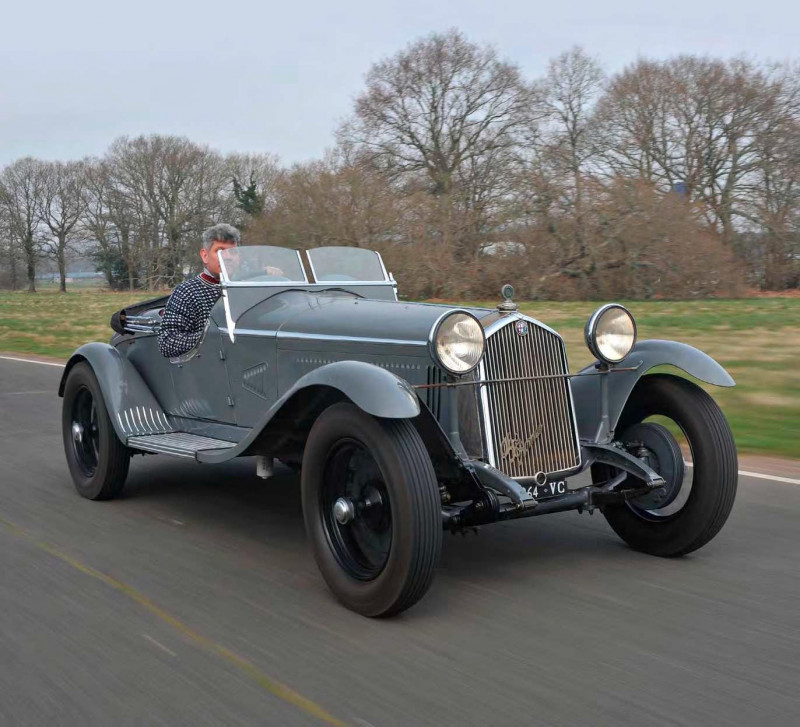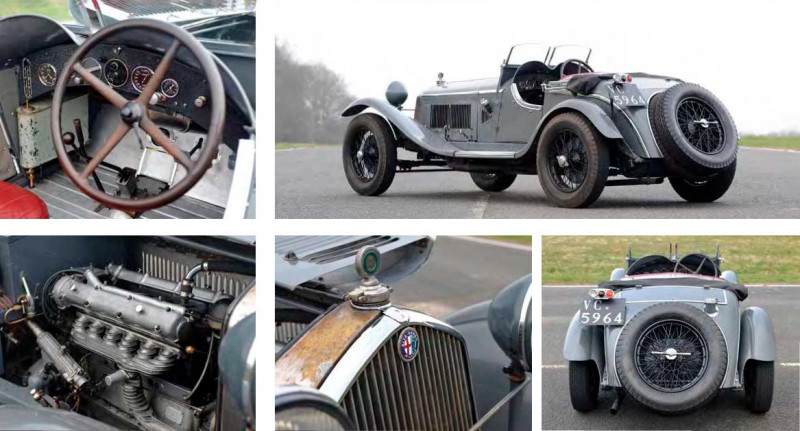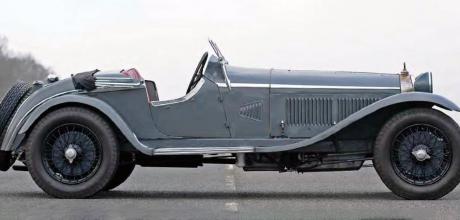1929 Alfa Romeo 6C 1750
So many pre-war Italian cars might have made it on to our Top 12 list: the Lancia Lambda for its pioneering unitary construction; the Fiat Topolino for how it democratised transport; or the Lancia Aprilia for its advanced engineering. Instead, it’s one of the greatest sports cars of all time that has exerted an irresistible pull on us: the Alfa Romeo 6C 1750. Those ‘6C’ alpha-numerals simply signify six cylinders, but in Alfa lore that represents something very special. While there had been Alfa straight-six engines before (the G1 of 1921 and the Merosi-designed RL of 1923), it was engineer Vittorio Jano, who joined Alfa Romeo in September 1923, who catapulted the format to the height of success with his 1.5-litre ‘six’. The new powerplant entered production as the 6C 1500 in 1927.
1929 Alfa Romeo 6C 1750 Sporting Spirit

Jano’s 1487cc engine used a single overhead cam and was an exceptional powerplant in so many ways. But there was more to come, as in 1929 Jano increased the capacity to 1752cc by boring and stroking it. The 6C 1750 moniker was born, establishing the legendary ‘1750’ number in Alfa lore. Even in regular form, performance from the 1.75-litre engine was exceptional for the time, with its new twin overhead cam design offering excellent torque as well as power. It was the sporting models that made the 1750 legendary: the Super Sport of 1929 and the upgraded Gran Sport that followed it in 1930, boasting a twin-choke carb and crank-mounted supercharger. In ‘Compressore’ form, using a Roots-type supercharger made in-house by Alfa, the 1750 unit was capable of up to 95hp in road-going spec, and as much as 102hp in competition spec.

The Alfa was a lightweight machine that offered the ultimate in speed, handling and braking at the time. As much was proven in competition: in 1929, for instance, it triumphed in every major event it entered, including the Grands Prix of Belgium, Spain, Tunis and Monza, plus the Brooklands Double Twelve, Ulster TT and Mille Miglia.
The 6C 1750 lasted in production until 1933, during which time 2635 were made. The most desirable bodies built on the 1750 chassis were undoubtedly those made by Zagato of Milan. And it’s one of Zagato’s creations that you’re looking at on these pages: specifically a 1931 6C 1750 Gran Sport Zagato. Brought along by Nick Benwell of the renowned pre-war sports car specialist, Phoenix Green Garage based in Hampshire, this is one of several 1750s that competed in the 1933 Mille Miglia. It remains in remarkably unspoilt condition, sporting for instance its original engine and gearbox; even some of the paintwork on that tautly purposeful Zagato bodywork is original.
In a brief sojourn in this historic machine, we’re able to marvel at the centre accelerator and right-hand brake pedal. It feels surprisingly fast, as well as agile with its short wheelbase and narrow track. The gearbox is certainly noisy in third but it smooths out beautifully in fourth, and Nick reports that the 6C can run happily all day in top gear. That’s something it certainly needed to do back in 1933 – in its day, the 1000-mile Mille Miglia was completed in something like 16 hours.


